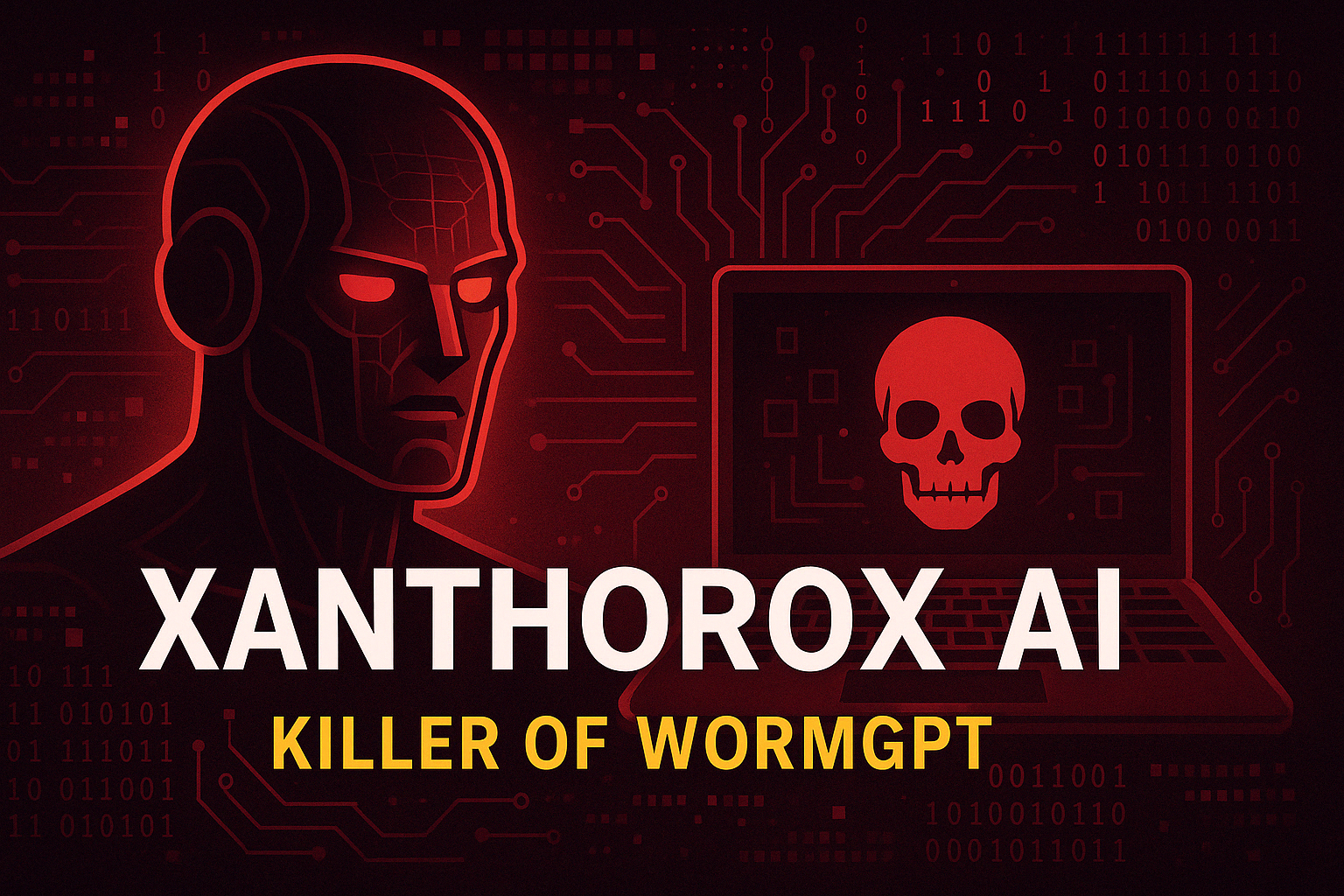
In recent years, particularly since the public availability of tools like ChatGPT, AI has taken center stage in many discussions of technology. Using AI can serve a variety of legitimate purposes for businesses and individuals alike, but it can also empower sophisticated cyberattacks that security professionals must address to keep up with the evolving threat trends.
A newly emerging player in the AI threat landscape, Xanthorox AI, is being branded the “Killer of WormGPT,” referencing the evolutionary leap from previous malicious AI tools. In late Q1 2025, according to cybersecurity provider SlashNext, Xanthorox was found being passed around darknet forums and encrypted communications, marketed as a modular, adaptable AI platform built from the ground up to enable cyberthreats.
Xanthorox AI's Distinctive Architecture
The significance of Xanthorox AI is in the steep difference from prior existing AI cybercrime tools, a major step forward for threat actors leveraging AI to enable more numerous, sophisticated, and effective attacks. The new AI platform is based on five distinct models, all running on entirely local servers to enhance stealth and privacy over models relying on public-facing cloud infrastructure or exposed APIs.
The specialized language models are fully custom-built, rather than using mainstream foundation models like GPT, LLaMA, or Claude. Designed from the ground up by threat actors for offensive purposes, serving a range of functions to empower different types of cyberattacks, the platform’s specialized and optimized functionality is unlike all previous AI tools used maliciously.
Capabilities That Redefine Malicious AI
Each model is optimized for a different specific operational task, enabling a wide range of attacks with specialized AI functionality. The capabilities that set Xanthorox AI apart from previous malicious AI tools include:
- Xanthorox Coder: Generates malware code, automates script writing, creates vulnerability exploits
- Xanthorox Vision: Interprets images and screenshots, extracts data from visual sources
- Reasoner Advanced: Uses human-like decision-making processes, creates convincing social engineering output
- Voice Module: Enables both real-time and asynchronous voice-controlled commands
- Web Scraping Engine: Pulls data from more than 50 search engine sources tapped for real-time recon and intel
- File Analysis: Summarizes, rewrites, and extracts content from diverse file formats
Why It Matters: Offline, Unmonitored, and Untraceable
Xanthorox AI is set apart by a number of factors that give it an edge over previous AI tools used by malicious actors. It is entirely privately and locally hosted on the seller’s servers, so it does not depend on APIs or cloud infrastructure, reducing the opportunity for security tools to detect the malicious activity. It is fully customizable and modular, making it useful to a wide variety of threat actors for many different types of attacks. Xanthorox AI also uses zero third-party telemetry, containing data and focusing control of the tool to avoid the risks of third-party involvement.
Overall, Xanthorox “is the culmination of where AI has evolved to at this moment in time,” according to Kris Bondi, CEO and Co-Founder of Mimoto, a San Francisco, Calif.-based end-to-end recognition company. “Self-directed, autonomous cyberattacks can hyper-charge bad actors’ ability to innovate their attacks.” This step forward in attackers’ offensive capabilities serves to exacerbate and complicate the preexisting threat of AI-enhanced cyberattacks that organizations and security experts have been facing.
The Cybersecurity Response
While Xanthorox AI presents a daunting threat that differs from previous offensive AI tools, the cybersecurity community can take steps now to protect against AI-empowered attacks. SlashNext offers an advanced platform featuring behavioral and language analysis to detect AI-generated email threats in text, images, and multi-channel phishing attacks.
AI-empowered behavioral analysis is crucially important for detecting modern attacks in a constantly shifting threat landscape, as traditional security tools are not sufficient to protect against AI-enhanced attacks. The extreme modularity and versatility of Xanthorox AI can only be counteracted with multi-modal and multi-channel phishing defenses in real time.
Implications and Looking Ahead
While Xanthorox is a major leap forward for cybercriminal usage of AI, it could represent the beginning of a trend of similar tools and platforms. Xanthorox could potentially inspire future criminal open-source frameworks that take advantage of increasingly advanced AI capabilities in self-hosted, modular tools.
Generative AI has already been a known tool in threat trends of recent years, and more recently, AI agents have made it even more of a threat, but a fully self-hosted AI tool like Xanthorox is still a major upset in cybersecurity. Preparing for a future of autonomous black-hat AI tools requires security experts and teams to approach evolving and emerging threats with advanced security tools, robust policies, and a thorough understanding of the shifting threat landscape.
Conclusion
Xanthorox AI poses a danger in its departure from previous AI tools used by threat actors. In addition to the risks of this new platform, it may also indicate that in 2025 and beyond, tools like this will go from being a niche threat to a widespread menace. It has the potential to be more effective, sophisticated, and difficult to detect and block than prior malicious AI tools, requiring advanced security tools and robust defenses. To meet the threat of Xanthorox AI, security teams must address the urgent need for proactive, AI-first cyber defense strategies.